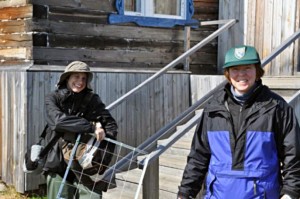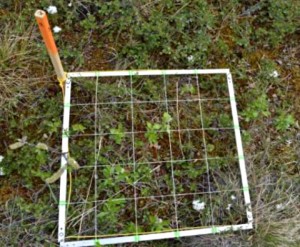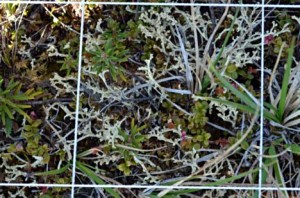by Maitane Iturrate
Kytalyk, July 9, 2013
Back to work again, since yesterday we took the day off. Our first “free” day, although the concept of free was a bit weird: chop wood, carry wood, pump water, manage waste disposal, clean, tidy up… Luckily, past 16:30h it became a really free day, even dinner was special with reindeer meat balls with pasta and special bread. And at end of the day, we even watched a film!
The first week of field work passed by really fast. After selecting my 30 plots, I started to determine the species composition of my plots. The process was straightforward: placing a grid of 50 by 50 centimeters divided in 25 smaller quadrants and identifying the different species, while noting down presence and absence. While on the first day I only could see the little quadrants full of vegetation. However, after two days, each quadrant became like a little mini-forest with several strata, where I could see how the mosses tried to escape from the shade of Betula nana growing higher up, or how the composition of species changes when Peltigera aphtosa was occupying most of the ground. Awesome!
Some species were really easy to identify, such as the Cassiope tetragona, Arctostaphylos alpina or Betula nana, but for others I had many problems, so at the moment I only have the description of them. The good point is that today Dr. Olga Khitun, a Russian botanist, has arrived. She will teach me how to identify species unknown to me and how to sample relevés using the Braun-Blanquet approach to determine species associations around Kytalyk.

Maitane Iturrate and Olga Khitun ready to assess the floristic diversity in the Kytalyk area. Up to now our list contains about 60 different species – let’s see how many more we will find! We welcome any bets on this … (Photo: G. Schaepman-Strub, July 2013).
I’m looking forward to starting to work together with her although it will be very intense again. We were walking around the research site after her arrival in order to get a first impression of the vegetation composition. It is great to see her stopping every few steps to explain me which species are there or her taking species samples if she is not sure about them herself. I feel really privileged of getting her help and learn from her knowledge and experience she gained in other arctic places such as Yamal.


